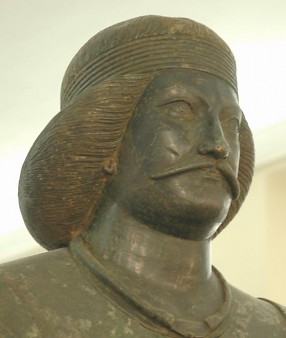Surena
Surena: Greek and Latin rendering of Sûrên, the name of a noble family in ancient Parthia.

The Surenas were one of the most outstanding families in the Parthian empire. The first one of them is mentioned by the Greek author Plutarch of Chaeronea:
Surena was an extremely distinguished man. In wealth, birth, and in the honor paid to him, he ranked next after the king; in courage and ability he was the foremost Parthian of his time; and in stature and personal beauty he had no equal. When he travelled about the country on his own affairs, he was always accompanied by a baggage train of 1,000 dromedaries; 200 wagons carried his harem; 1,000 armored cavalry and still more light armed cavalry acted as his escort. The total number of his cavalry, his vassals, and his slaves came to at least 100,000 men. He had, as an ancient privilege of his family, the right to be the first to set the crown on the head of the king of Parthia at the coronation.note
This Surena was a commander became famous becausem, fighting for king Orodes II, he defeated the Roman commander Crassus in 53 BCE. The family remained very influential in later times, still having the right to crown the Parthian kings at the beginning of the third century CE.

When the Parthian empire came to an end and the Sasanians started their rule, the Surena family switched sides and continued to serve as royal commanders. The family was still recognizable in the ninth century.
It is probable that the Surenas possessed land in Sacastane, i.e. the country between Arachosia and Drangiana in the southwest of modern Afghanistan. They had expelled the Sacae, who invaded Gandara, conquered Taxila, and settled in the Punjab. The Surenas seem to have owned Sistan as their personal fief.